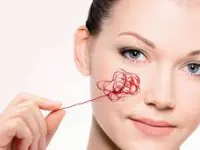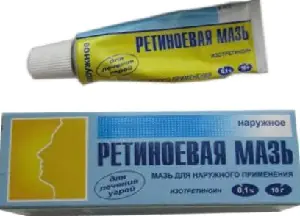
Nobody likes acne, but its occurrence is almost inevitable at different points in life. But how to get rid of such troubles? This is what our article is about.
Retinoic ointment is a slightly forgotten remedy, but its effectiveness is not inferior to expensive drugs. This product perfectly regenerates the skin, helps eliminate wrinkles, acne, and blackheads. But this product should be used correctly so as not to dry out the skin too much.
General information about the drug

The main component of this product is isotretinoin (a special form of vitamin A), which has many beneficial qualities. The composition also includes excipients:
- glycerol;
- ethanol;
- emulsion wax;
- Vaseline oil;
- water;
- a small amount of additional substances that are responsible for the shelf life of the product.
The ointment is produced in tubes of various weights. The price of Retinoic ointment ranges from 150 to 300 rubles, depending on the volume and pharmacy.
The effect of ointment on the skin
Our face is influenced by various factors that provoke the appearance of acne and excessive oiliness of the skin. The T zone (forehead, nose, chin) contains a huge number of sebaceous glands. For various reasons, especially in the hot season, they intensively begin to produce lard. If facial cleansing is not done in a timely manner or for other reasons (hormonal disorders, chronic diseases), the ducts become clogged with sebum, forming plugs + the external environment aggravates the situation (dust, ultraviolet rays). Thus, we get pimples, blackheads, and blackheads.
The best remedy in the fight against problem skin is retinoic ointment. Vitamin A, which is the main component of the product, has a positive effect on the epidermis, slows down the growth of acne, and promotes more active sebum removal. Thus, the skin becomes drier and the appearance of new defects is prevented.
For many years, acne has been treated with this ointment. This product kills pathogenic microorganisms and reduces the amount of sebum produced. In addition, it launches a natural regenerative, anti-inflammatory process.
Although the product was originally intended to treat skin rashes. We used Retinoic ointment against wrinkles to smooth them out and prevent them. The regenerating effect provides greater blood flow, which in turn stimulates the production of collagen (the substance responsible for the elasticity and smoothness of the skin).
At the moment, there are many analogues, but what is time-tested is always better. The main thing is to use the product correctly, read on how exactly.
How to get rid of spider veins on the face? Find out effective treatment and removal methods.
Effective and safe methods of treating herpes on the lips during pregnancy are described on this page.
Instructions for use of Retinoic ointment
Little secrets of using retinoic ointment: 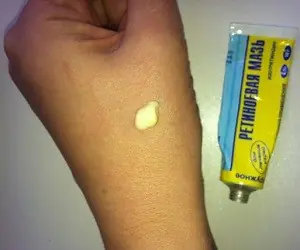
- Before the first application, stock up on sunscreen. After all, isotretinoin increases sensitivity to ultraviolet rays; without the necessary barrier, there is a high probability of sunburn. These measures are only for the period of application of the ointment; after the procedures, you can lead your usual lifestyle;
- other cosmetics should be abandoned. During the procedures, cleansing processes occur in the skin, a slight opening of the pores, so by applying cosmetics or other creams, lotions, we can provoke an allergic reaction or even greater blockage of the pores;
- You should also consult a dermatologist before use so as not to harm your body;
- Before use, be sure to cleanse your face and let it dry completely;
- Another feature of retinoic ointment is that some people experience side effects (there are more acne for a while, and then they all disappear), while others do not. You can avoid this situation with the help of a test: apply every evening to your face for three days; for hypersensitive skin, once a week will be enough; if no negative effect is detected during this period, then feel free to use it;
- Mild peeling of the skin should not be considered a side effect, as the epidermis “sheds” dead cells, and young people begin to breathe at full capacity. After this procedure, the next morning you will notice that your face seems to have become younger and has acquired a fresh appearance;
- Women who are planning pregnancy or are already pregnant or breastfeeding are not recommended to use this product. Vitamin A in large quantities causes various deformities in the fetus or developmental disorders in the baby;
- the group of retinoids does not act quickly, so for noticeable rejuvenation you will need a course of at least 1 month, but 2 weeks will be enough to eliminate acne. It is advisable that the course be prescribed individually by your dermatologist, because I usually do anti-wrinkle courses 2 times a year;
- when treating comedones, apply ointment to pustules and papules 2 times a day, but do not apply with bare hands, use cotton swabs;
- do not apply ointment to the area around the eyes and mouth, do not completely smear the entire face, some areas of the skin do not need excessive cleansing;
- for the purpose of rejuvenation, use this product only after 30 years of age; to fight pimples, use it at any age (but remember, apply precisely to each pimple if you do not have acne or complete inflammation).
Contraindications
Just like any other drug, retinoic ointment has a list of contraindications:
- do not use the product during pregnancy, during pregnancy planning, or when breastfeeding;
- with severe skin sensitivity to the active ingredient;
- with concomitant skin diseases (eczema, psoriasis), or various injuries, burns, a large number of age spots;
- when taking medications containing large amounts of vitamin A;
- in case of chronic illnesses (diabetes mellitus, kidney disease, liver disease), it is better to consult a specialist;
- stop treatment if itching, rash, or severe peeling occurs that does not go away for a long time;
- too long a course leads to hypervitaminosis of vitamin A, which negatively affects the human condition (conjunctivitis, headaches, internal bleeding, disturbances in the functioning of the gastrointestinal tract). Therefore, use the product in courses with long breaks.
How to get rid of freckles on your face? Find out now!
Read more about using Aspirin for facial acne at this address.
Follow the link and find out the instructions for using Acyclovir acri for skin diseases.
Feedback from users
How many people, so many opinions. It is impossible to say with certainty that the ointment will certainly help you. But in most cases, many positive comments have been written and heard about this product, here are a few of them:

Katerina, 23 years old
My adolescence has passed, but acne remains, I tried many remedies. Some are worse, others are better. But I came across retinoic ointment for the face, after three times of use the skin peeled slightly, but the pimples dried out, which made me very happy. Over time, I realized that the course of treatment should last, at least for my skin, no more than 3 weeks. I took a break for the same amount of time and then repeated the course. The result is very noticeable: there are almost no traces of acne left, the face is fresher. Overall, I recommend it!
Maxim, 25 years old
I used it for a month, it helped great, then the effect decreased. I was advised to have a lower concentration, but 2 times a day (before that I applied it once at night), I thought for a long time, I just had a break of a week. After some thought, I decided to take a new course; oddly enough, the acne became less red, but overall it didn’t help.
Alexandra
I started using the ointment, after 3 days my face turned red, then I read about this product, it turned out that this emulsion is not suitable for overly sensitive skin, so I stopped. But several days passed, the redness subsided, and the skin condition improved a little. Well, what can I say: “If your skin is not so delicate, then feel free to use it!”
Retinoic acne ointment has been used by cosmetologists for a long time. Read whether the medication helps in the treatment of acne, what contraindications it has and causes unwanted reactions.
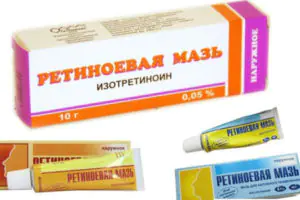
Description
For the treatment of acne, 0.01%, 0.05% and 0.1% Retinoic ointment are used. In appearance it is a homogeneous yellow mass. The medication contains isotretinoin as a therapeutic component.
The substance is a biologically active form of retinol. It normalizes the composition of sebum, facilitates its evacuation, reduces its quantity and the inflammatory process around the sebaceous gland. The drug has an antiseborrheic and keratolytic effect, accelerates the healing of damaged tissues.
In addition to isotretinoin, the medication contains inactive components:
Positive effect of the drug
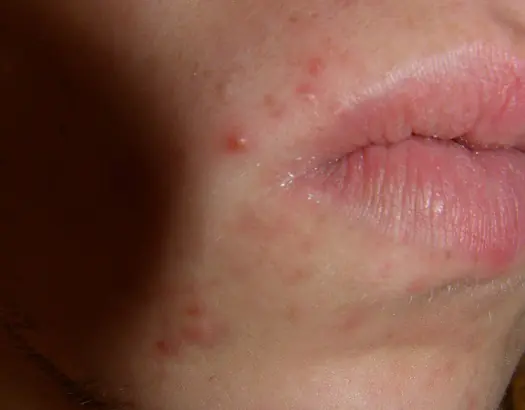
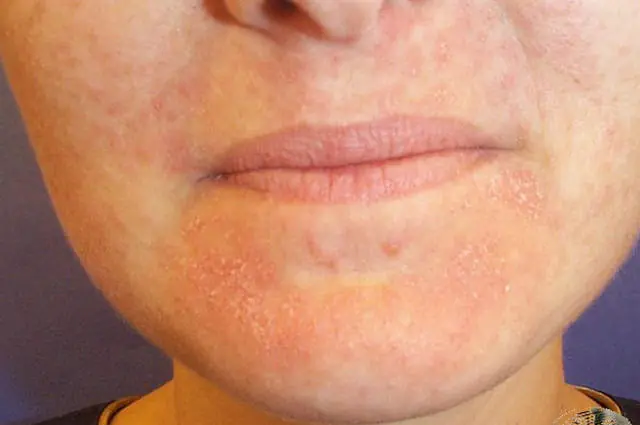

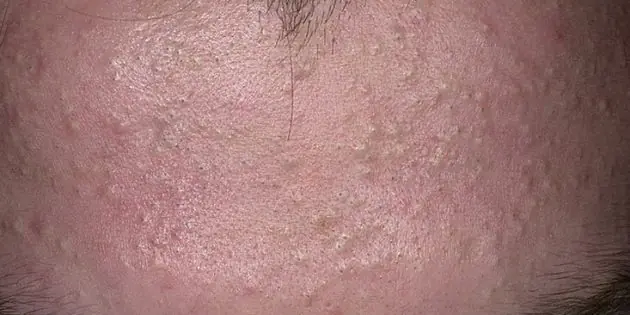
The medicine penetrates into the deep layers of the skin through the stratum corneum and the ducts of the sebaceous glands.
When applied topically it:
- cleanses the skin of acne;
- improves blood supply to the skin;
- stimulates collagen synthesis;
- removes age spots;
- increases local immunity;
- makes the skin smooth and pleasant to the touch.
You can verify the positive effect of the medicine on the skin by looking at the before and after photos of people who used it.
Precautions and unwanted effects
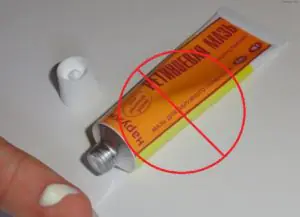
Before starting therapy, you need to find out whether the drug can be used. The instructions for use state that the medication should be used with caution by people suffering from chronic pathologies of the liver, kidneys, pancreas, and heart failure in the stage of decompensation.
Women planning to conceive, carrying a child and supporting breastfeeding are not recommended to apply retinoic ointment to large surfaces.
In the 2nd week of therapy, an exacerbation reaction may begin, which is manifested by new acne, itching, hyperemia and peeling of the skin, comedones and subcutaneous pimples mature faster and begin to crawl out. If the unpleasant effects are severe, then it is advisable to interrupt the treatment for several days until they pass.
In case of hypersensitivity to the composition of the drug, on the 2nd day of therapy, the appearance of itching, swelling and rash may occur. In this case, the medicine is discontinued and another remedy is selected.
With prolonged therapy, signs of hypervitaminosis A may appear, such as:
- cheilosis;
- inflammation of the conjunctiva;
- dryness and flaking of the skin.
These symptoms quickly disappear when therapy is discontinued and local glucocorticosteroids are used. To reduce the risk of developing hypervitaminosis A during treatment, it is not recommended to use other medications from the retinoid group.
Retinoic ointment does not slow down the reaction and does not affect the ability to drive a car.
How to use for acne
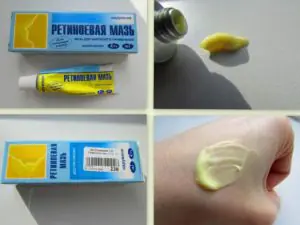
To benefit from retinoic ointment, you need to know how to use the medication correctly.
During treatment, a number of rules must be followed:
- The drug is applied in a thin layer to the affected tissue in the morning and evening for 4-12 weeks. If required, a repeat course is possible on the recommendation of a doctor.
- Apply the ointment only to cleansed and dry skin.
- It is not recommended to use scrubs and other products that have an aggressive effect on the skin during treatment.
- The therapeutic effect of the drug is weakened when used in combination with local glucocorticosteroids.
- It is not recommended to apply the drug to the eyelids, as the skin here is delicate and the ointment will cause burns and redness. It is undesirable to use the medicine for severe inflammation.
- You need to make sure that the medication does not get on the mucous membranes; if this happens, rinse them immediately with water.
- When using the ointment, you must protect the skin from ultraviolet rays. When going outside, it is recommended to use sunscreen; during treatment, it is better to avoid visiting a solarium.
- To prevent retinoic ointment from losing its medicinal properties, it must be stored at a temperature of 2-8 degrees for 24 months from the date of production. The drug should not be frozen.
Sales rules and substitutes

You can buy retinoic ointment without a prescription. In addition to it, the following medications contain isotretinoin as an active component:
All these medications are available in capsules. They are prescribed for severe acne that cannot be treated with other drugs.
The treatment regimen is selected individually depending on the severity of the clinical picture, tolerability of the drug and the body’s response to the drug, and renal function.
Side effects
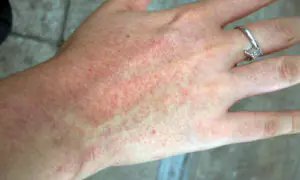
Taking these drugs can cause a number of unwanted reactions, such as:
- behavior change, depression, intracranial hypertension, convulsions, headache;
- problems with vision and hearing;
- nausea, upset stomach, inflammation of the intestines, gastrointestinal bleeding, hepatitis, pancreatitis, which can be fatal;
- change in blood picture;
- bronchospasm;
- joint and muscle pain, inflammation of joints and tendons, hyperostosis, calcification;
- itching, rash, facial redness, dermatitis, excessive hair growth, hair loss, appearance of age spots, photosensitivity;
- hypervitaminosis A;
- increased urea, glucose and lipids in the blood;
- diabetes;
- infections caused by Staphylococcus aureus;
- the appearance of protein and blood in the urine, glomerulonephritis;
- swollen lymph nodes;
- Lyell and Stevens-Johnson syndrome.
Contraindications to oral medications

Oral medications containing isotretinoin should not be taken if the following pathologies are detected:
- liver dysfunction;
- increased lipid content;
- hypervitaminosis A;
- intolerance to the composition of the drug.
They are prohibited from being taken during treatment with tetracycline antibiotics.
They should be taken with caution by patients suffering from diabetes, excess weight, alcohol addiction, lipid metabolism disorders, and a history of depression.
Isotretinoin capsules should not be given to children under 12 years of age or to women who are breastfeeding. They are prohibited from drinking when planning conception and during pregnancy, as they cause congenital pathologies in newborns and increase the frequency of miscarriages.
After completing therapy, planning to conceive is permissible only after a month.
Retasol, a topical solution containing isotretinoin, is also commercially available. It is a clear oily liquid. The solution can be used to treat acne in persons over 12 years of age, with the exception of women planning to conceive, carrying a child, or breastfeeding.
It is permissible to use analogues instead of retinoic ointment only with the permission of a doctor. Preparations containing isotretinoin should be prescribed orally by a dermatologist who has experience working with them and is aware of their teratogenic effects.
Conclusion
Despite all the positive reviews from cosmetologists and people who have used retinoic ointment, it is unacceptable to use it without consulting your doctor.
Retinoic ointment for acne and age-related changes is a very popular pharmaceutical product aimed at combating skin imperfections. Thanks to its composition, in which the main role is played by natural derivatives of vitamin A, it is able to cope with many troubling problems. That is why this product has earned a single positive review not only in dermatology, but also in cosmetology.
Beneficial features
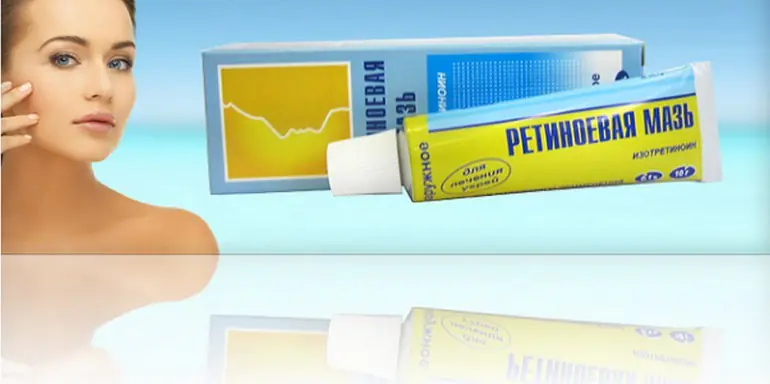
Retinoic ointment helps with acne if used correctly. The following positive changes in skin condition can be noted:
- exfoliation of dead areas of the epidermis occurs; skin metabolism is restored;
- the functioning of the sebaceous glands is normalized by reducing their secretion;
- helps against acne and blackheads, without leaving scars or scars;
- removes age spots and acne marks; inflammation around the glands is reduced;
- effective against stretch marks on the stomach and chest;
- provokes increased production of collagen in the dermis;
- stimulates its own regeneration processes;
- increases the immune properties of the skin, making them resistant to pathogenic bacteria and external irritants.
The degree of action of this medicine depends on its concentration. Having identified the troubling problem, the dermatologist prescribes a 0.05% drug (if small pimples, small wrinkles are bothering you, for prevention) or 0.1% (when there are more severe forms of rashes and obvious signs of aging).
Contraindications and side effects
Any medication is accompanied by an annotation describing the drug and its properties. The instructions for use require careful study, as they indicate the main contraindications and possible side effects.
The use of retinoic ointment is prohibited in the following cases:
- during the period of bearing a child and breastfeeding;
- if a future pregnancy is planned;
- with impaired liver and kidney function;
- excess vitamin A in the body;
- presence of chronic pancreatitis;
- if there are allergic reactions to synthetic components of the drug.
Most often, side effects occur in the first stages of treatment and disappear after some time. Also, undesirable manifestations are observed when the medicine is used incorrectly or are caused by the characteristics of the body. These include:
- dryness and peeling of the upper layers of the epidermis;
- slight burning sensation in the treated areas;
- irritation of the epidermis;
- sweating;
- an increase in the volume of rashes, as well as the size of individual pimples;
- redness and swelling at the application sites;
- increased sensitivity to ultraviolet radiation.
All these unpleasant symptoms arise due to the retinoic acid contained in it. Therefore, you should avoid overdose and strictly follow the treatment regimen indicated by the dermatologist. The topical drug is prescribed to representatives of both sexes and different age categories.
Application
Before you start fighting rashes, you need to figure out how to use this product to get the desired result and avoid side effects.
When retinoic ointment is prescribed for acne, the instructions imply the following application regimen:
- treat problem areas twice a day after thoroughly cleansing the epidermis;
- depending on the condition of the integument, the course ranges from four to six weeks.
In the first two weeks of therapy, an increase in the number of rashes is noted (thus, excess sebum is removed and metabolic processes in the dermis are stabilized). Treatment is stopped only if the rash, redness and swelling are severe. The maximum result can be assessed only after three months of use. To prevent acne from returning in the future, it is enough to treat the skin once every four days.
Since the drug has cumulative properties, to avoid an overdose, at the end of the course you should change the medicine to a product with a weaker concentration of the active ingredients.
There is another way to use retinoic ointment to avoid negative consequences for the face as much as possible.
- in the first days of use, the drug is applied only once a day, before bedtime;
- If in this case itching and redness appear, the problem areas are smeared every other day.
Over the course of two weeks, the epidermis adapts to the impact exerted on it. Then they switch to non-daily use, the number of procedures increases to twice a day. This method is suitable for people with sensitive skin and patients who do not have time for a rehabilitation period.
The basis of the ointment is Vaseline; it is considered a very greasy component that helps clog pores. This factor can harm problem skin, so the drug is applied pointwise, only to areas that require therapy.
Features of the drug
Before you start treatment with this remedy, you should familiarize yourself with some of its distinctive properties and recommendations from specialists:
- You should not treat with a retinoid before going outside in hot sunny weather, as it makes the epidermis more vulnerable to ultraviolet rays;
- When using, it is better to avoid sensitive areas (lips, skin around the eyes);
- if your skin type is dry, then this product should be combined with a nourishing cream to prevent flaking and a feeling of tightness;
- You cannot stop treatment abruptly, it is better to do it gradually;
- Initially, retinoic ointment for acne can have the opposite effect and increase the number of rashes. Do not panic, as this is a temporary phenomenon, and in a week the condition of the dermis will become much better;
- it is necessary to strictly follow the rules of application and the duration of the course, only in this case the ointment helps.
Reviews

Svetlana 24 years old:
I used different acne remedies, but they gave temporary results. I was interested in retinoic ointment for acne, reviews of which indicated a positive result. After completing the course, the effect really became noticeable. After a month, I practically got rid of not only acne, but also small wrinkles. To achieve clear skin, you need to have patience, since the first two weeks the inflammation becomes much greater, redness and peeling are disturbing.

Elizabeth 30 years old:
I have been using a lotion based on retinoic ointment for a very long time. I mix a spoonful of the product with the same volume of calendula tincture and two aspirin tablets. I apply it directly to acne and acne spots before bed. An effective method, I recommend it to everyone.

Alena 28 years old:
As summer approaches, the skin becomes more sensitive and acne appears. I took the risk of trying retinoic ointment on my own, without consulting a dermatologist. I was very afraid that it would irritate me even more (a common side effect), but this did not happen. Acne began to disappear after two weeks of treatment, and I noticed a reduction in the number of blackheads. The only drawback is that the skin becomes very dry, you have to constantly moisturize.
Retinoic ointment is a medicine, so it must be prescribed by a doctor. The drug not only removes bothersome symptoms, but also fights the causes of acne. Self-medication or violation of therapeutic standards indicated by a specialist can aggravate the situation and cause harm to the skin.



